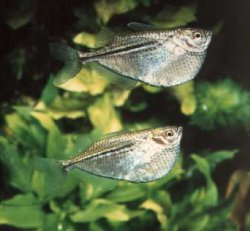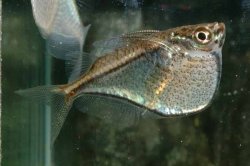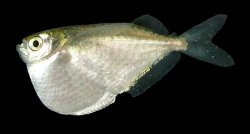Do you think I should also change the filter pads?
no.
Anything that breaks down in the water, be it fish food, fish waste, dead plant, dead fish, etc, produce ammonia. In a healthy tank with an established filter, the ammonia is eaten by beneficial bacteria and converted into nitrite. You get more good bacteria that eat nitrite and convert it into nitrate. You get rid of nitrates by doing water changes.
In a new tank the bacteria is not normally present and you get a build up of ammonia that harms and can kill the fish. A few weeks after the tank has been set up, you get the first colonies of good bacteria that eat the ammonia. A couple of weeks after that you start to get the other good bacteria that eat the nitrite. It normally takes about 4-6 weeks for an aquarium to develop the colonies of good bacteria that keep the ammonia and nitrite levels at 0.
When the ammonia and nitrite levels have gone up and come back down to 0, and the nitrate levels start to go up, the tank will be considered cycled (developed the necessary good filter bacteria).
Until then you keep feeding down and water changes up. By reducing the food going into the tank, you help to keep the ammonia levels lower. By doing big water changes, you help to dilute any ammonia in the water.
In a newly set up aquarium, you should feed the fish a couple of times per week. Don't worry, the fish won't starve. You should also do a 75% water change and gravel clean the substrate 4-8 hours after feeding. And you should monitor the ammonia and nitrite levels and do a 75% water change any day you have an ammonia or nitrite reading above 0, or a nitrate reading above 20ppm.
*NB* Make sure any new water is free of chlorine/ chloramine before it is added to the tank.
The big water changes will not harm the filter bacteria or fish as long as any new water is free of chlorine/ chloramine before it is added to the tank.
-------------------------
During the first month of a tank's cycle, you monitor the ammonia and nitrite levels. You normally get ammonia readings for the first few weeks. The ammonia goes up and as the beneficial filter bacteria build up in numbers they gradually convert the ammonia into nitrite. After a few weeks the ammonia level will suddenly drop to 0 and the nitrite will start to go up. A couple of weeks later the nitrite levels drop to 0 and the nitrates start to go up. You get rid of nitrates by doing water changes.
During the cycling period you do not test for nitrates until the ammonia and nitrite have gone up and come back down to 0. Nitrate test kits will read nitrite as nitrate and give you a false reading. So you monitor ammonia during the first few weeks and then start monitoring nitrite as well. Once they have both gone up and come down to 0, you start monitoring nitrate.
-------------------------
Do not clean the new filter for the first 6-8 weeks. This allows the filter bacteria a chance to settle in properly and stick to the filter media. Two weeks after the filters have finished cycling, you can start to clean the filter.
Established filters should be cleaned at least once a month and every 2 weeks is better.
To clean a power filter or internal sponge/ box filter. You get a bucket of water from the aquarium and squeeze the filter materials out in the bucket of tank water. When they are clean you put them in the aquarium. Wash/ rinse the filter case and impellor assembly (for a power filter) under tap water. Remove any excess tap water by tipping the filter case upside down, then put the filter materials back into the filter and set it back up and get it going.
Do not replace filter pads unless they start to fall apart. You can add sponges to the filter to hold the beneficial bacteria and they will last for years so you don't have to replace filter pads.
You can get round/ cylindrical sponges for some brands of internal power filter. These sponges have a hole through the centre and can be put on the intake strainer of the external filter.





